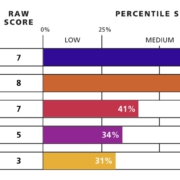Trust lies at the heart of every successful negotiation, leadership decision and meaningful professional relationship. Its essence is not merely a passive expectation but a dynamic interplay of behaviors that inspire confidence, drive collaboration and cultivate mutual respect. Drawing from cutting-edge research and practical guides, including Keld Jensen’s innovative “Smartnership” approach with its focus on the “Tru$t Currency”, this article unveils the “Trifecta of Trust”: Positive Relationships. Good, quality Judgment/Expertise. And Consistency. Jensen’s approach highlights, that trust between negotiators or partners in a transaction often leads to a mutual willingness to explore the vast potential of asymmetrical values, uncovering significant financial benefits and thus serving as a pivotal dealmaker. These three pillars form the foundation upon which trust is built, maintained and leveraged for extraordinary outcomes. Special acknowledgment is extended to Jack Zenger and Joseph Folkman, whose pioneering work on the “Three Elements of Trust” serves as a cornerstone for this blog contribution. For further insights, visit Zenger Folkman’s homepage.
The Three Elements of Trust
Positive Relationships
The cornerstone of trust begins with relationships that transcend transactional exchanges. Leaders and negotiators can cultivate positive relationships by:
Encouraging Collaboration: Break silos and create opportunities for cross-functional teamwork, recognizing and crediting contributions from all sides.
Providing Development Opportunities: Engage in coaching and mentoring to nurture the growth of individuals. Empower team members to discover solutions autonomously while offering meaningful guidance.
Inspiring Through Positivity: Passion is contagious. Regularly express enthusiasm and commitment to shared goals and involve teams in setting ambitious yet achievable objectives.
Listening Actively: Create space for honest dialogue by addressing concerns without rushing to solve them, showing empathy and attentiveness.
Good Judgment/Expertise
Trust is bolstered by demonstrating competence and sound decision-making. This involves:
Exercising Expertise: Stay well-informed and proactive in identifying trends and potential issues. Leverage knowledge to craft informed, innovative solutions.
Aligning Vision with Action: Help others see how their roles contribute to broader objectives. Link individual efforts to organizational strategies to instill a sense of purpose.
Communicating Clearly: Foster transparency by regularly updating stakeholders about progress, challenges and plans. Tailor communication to address their most pressing concerns.
Consistency
Walking the talk solidifies trust. Consistency ensures reliability through:
Delivering on Promises: Document commitments and follow through meticulously. Develop detailed plans that clarify the “how, when, and why” of actions.
Setting High Standards: Encourage excellence within teams and create environments where collaboration thrives. Continuously raise the bar by celebrating small wins and pushing boundaries.
Being Adaptable: Embrace opportunities for self-improvement. Seek and act on feedback to exemplify growth and accountability.
The Interplay of Trust’s Elements
While each element is critical, research highlights that relationships carry the greatest weight. Even impeccable expertise and consistency cannot compensate for poor interpersonal connections. Leaders who are seen as supportive, empathetic and invested in others’ well-being build a reservoir of trust that withstands inevitable missteps.
Yet, it’s not about perfection. Leaders need only reach above-average performance across these dimensions to unlock transformative trust. This balance amplifies their effectiveness, deepens engagement and catalyzes collective success.
Toward a Trust-Centric Future
The Trifecta of Trust is both a guide and a challenge. It calls leaders and negotiators to assess their strengths, identify areas for growth and commit to continuous improvement. By mastering these elements, they not only navigate the complexities of modern professional landscapes but inspire others to do the same.
Case Study: Boeing and Airbus Collaboration
The 2020 global semiconductor shortage presented an unprecedented challenge for industries reliant on advanced technology. Amid this crisis, Boeing and Airbus—longtime competitors in the aerospace sector—forged a temporary collaboration to address supply chain disruptions. Their willingness to cooperate showcased the transformative power of trust and its “Trifecta” of elements.
Positive Relationships were pivotal. Despite years of rivalry, both organizations demonstrated mutual respect and empathy for the shared challenges. They prioritized transparent communication, fostering goodwill and a sense of partnership rather than competition.
Good Judgment/Expertise played a critical role. By pooling their deep knowledge of supply chain logistics, the companies identified innovative ways to streamline procurement and prioritize essential components. This collaboration leveraged their combined expertise to navigate a highly volatile market.
Consistency sealed the success of their efforts. Each party upheld commitments, ensuring timely deliveries and maintaining the trust established during negotiations. Their actions aligned with agreed-upon plans, reinforcing reliability and further deepening mutual confidence.
The interplay of these elements created an environment where both companies could explore asymmetrical values. By working together, they achieved efficiencies that would have been unattainable independently, resulting in substantial financial and operational benefits. This case exemplifies how trust, built on relationships, expertise and consistency, can transform even the fiercest competitors into collaborative problem-solvers.
The “Trifecta of Trust” demonstrates that trust, when cultivated through positive relationships, sound judgment and unwavering consistency, holds the power to turn challenges into extraordinary opportunities for collaboration and shared success. Wishing all friends, colleagues, and readers a joyful transition into a healthy and fulfilling new year, one, filled with life, love, laughter and enduring bonds that stand the test of time.

 ImpactNegotiating.com
ImpactNegotiating.com ©Sergey Bobylev/TASS
©Sergey Bobylev/TASS






